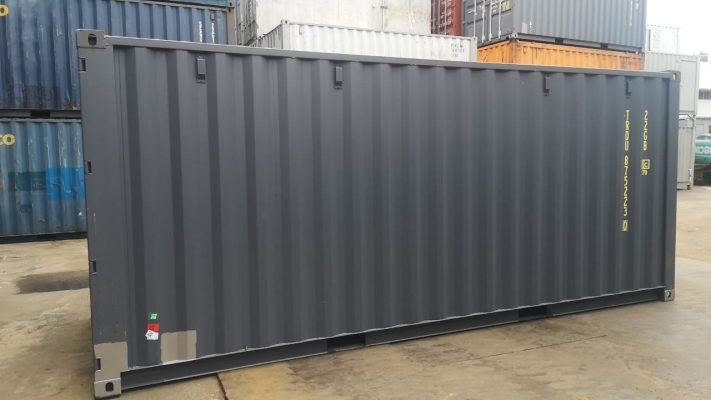DIY Shipping Container Projects: Tips and Inspiration

Shipping containers are versatile and durable structures that have gained popularity for various DIY projects. Whether you’re looking to create a unique living space, an innovative office, or a stylish outdoor retreat, shipping containers offer an affordable and sustainable solution. In this article, we’ll explore some exciting DIY shipping container projects, along with essential tips and inspiration to help you get started.
The Appeal of Shipping Containers
Shipping containers are designed to withstand harsh weather conditions, making them ideal for various uses. They’re readily available, often at a fraction of the cost of traditional building materials, and they can be modified to fit a wide range of purposes. The minimalist aesthetic of shipping containers also adds a modern touch to any project, allowing for creative customization and design.
Popular DIY Shipping Container Projects
1. Container Homes
One of the most popular uses for shipping containers is creating unique, sustainable homes. Container homes can be customized to fit individual needs and preferences. Here are some tips for building a container home:
- Planning and Design: Start by drafting a blueprint of your container home. Consider the number of containers you’ll need and the layout. Incorporate large windows to maximize natural light and create an inviting atmosphere.
- Insulation and Ventilation: Proper insulation is crucial for temperature control. Choose insulation materials that suit your climate, and ensure adequate ventilation to maintain air quality.
- Interior Finishing: Use drywall, wood paneling, or other materials to finish the interior. Consider using reclaimed materials for a rustic look.
2. Home Offices
As remote work becomes more prevalent, many are turning to shipping containers to create stylish home offices. A container office provides a dedicated workspace away from distractions. Here’s how to create your own:
- Location Selection: Choose a location in your yard that offers privacy and a serene environment. Ensure access to electricity and Wi-Fi.
- Natural Light: Cut out windows or install skylights to create a bright workspace. Natural light can significantly boost productivity and morale.
- Functional Layout: Design the interior with functionality in mind. Include storage solutions, a comfortable desk, and ergonomic seating to create a productive environment.
3. Garden Spaces
Shipping containers can also be transformed into stunning garden spaces. Whether you want a small vegetable garden, a flowerbed, or a full greenhouse, containers are a great option. Here’s how to get started:
- Container Selection: Choose containers that suit your gardening needs. Ensure proper drainage holes to prevent waterlogging.
- Soil and Planting: Use high-quality soil and select plants that thrive in your climate. Consider vertical gardening techniques to maximize space.
- Aesthetic Appeal: Paint or decorate your containers to match your garden theme. Add decorative elements like trellises or fairy lights for a magical touch.
4. Recreational Spaces
Shipping containers can be transformed into recreational spaces, such as a backyard bar, art studio, or game room. Here are some ideas to consider:
- Outdoor Lounge: Create an outdoor lounge area with comfortable seating, a fire pit, and string lights. This can become the perfect spot for gatherings with friends and family.
- Art Studio: Design a creative space where you can unleash your artistic talents. Include ample natural light, storage for art supplies, and inspirational decor.
- Home Gym: Convert a shipping container into a home gym. Install flooring, mirrors, and equipment to create a motivating workout environment.
Tips for Your DIY Shipping Container Project
1. Research Local Regulations
Before starting your project, research local zoning laws and building codes. Some areas have specific regulations regarding shipping container use, including permits and structural requirements.
2. Budget Wisely
Create a budget that includes the cost of the shipping container, tools, materials, and any labor you may need. Be realistic about your finances and plan for unexpected expenses.
3. Gather the Right Tools
Invest in or borrow tools essential for your project, such as a cutting torch, welder, and basic carpentry tools. Proper tools will make the construction process more manageable and efficient.
4. Work Safely
Safety should always be a priority. Use personal protective equipment (PPE) such as gloves, goggles, and masks when working with metal and power tools.
Inspiration to Get Started
For inspiration, look to various online resources, including blogs, social media platforms, and YouTube channels dedicated to shipping container projects. Platforms like Pinterest can provide countless ideas for design and functionality.
Visit local container homes and businesses that have utilized shipping containers creatively. Seeing these projects in person can spark ideas and provide insight into practical applications.
Conclusion
DIY shipping container projects are not only creative but also practical and sustainable. Whether you’re building a home, office, garden, or recreational space, the possibilities are endless. With careful planning, creativity, and dedication, you can transform a simple shipping container into a unique and functional space that suits your needs. So, gather your tools and get started on your shipping container project today!

